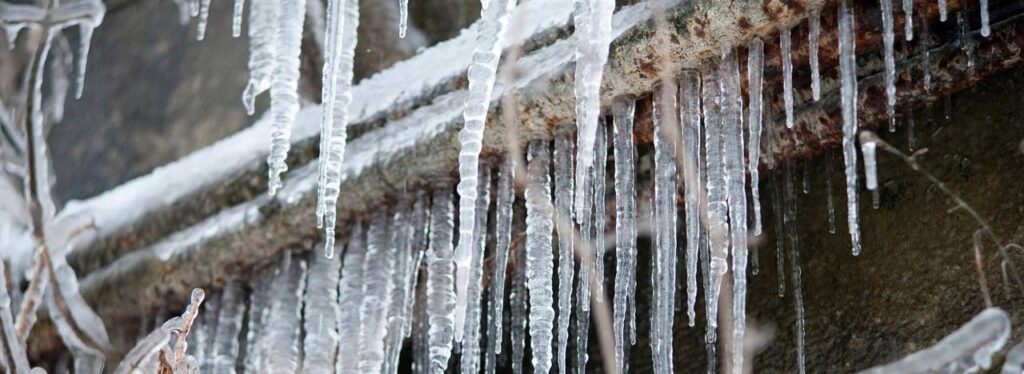What are your thoughts about Prevent Frozen Pipes ?

Winter can ruin your pipes, particularly by freezing pipelines. Right here's just how to stop it from occurring and what to do if it does.
Intro
As temperature levels decline, the danger of frozen pipelines increases, potentially bring about pricey repairs and water damage. Understanding exactly how to prevent icy pipes is essential for home owners in cool climates.
Recognizing Frozen Pipes
What creates pipelines to ice up?
Pipelines ice up when subjected to temperature levels listed below 32 ° F (0 ° C) for expanded periods. As water inside the pipes freezes, it broadens, taxing the pipeline wall surfaces and possibly causing them to burst.
Risks and damages
Frozen pipes can cause water system disruptions, property damage, and expensive repairs. Burst pipelines can flooding homes and trigger comprehensive structural damage.
Indicators of Frozen Pipes
Determining icy pipelines early can avoid them from bursting.
Exactly how to determine icy pipelines
Search for lowered water circulation from taps, uncommon odors or noises from pipes, and visible frost on revealed pipelines.
Avoidance Tips
Shielding susceptible pipelines
Cover pipelines in insulation sleeves or use heat tape to safeguard them from freezing temperatures. Concentrate on pipes in unheated or exterior locations of the home.
Heating strategies
Maintain indoor rooms sufficiently heated, especially locations with pipes. Open up closet doors to allow warm air to circulate around pipelines under sinks.
Securing Outdoor Pipes
Garden hoses and exterior taps
Separate and drain garden tubes before winter. Set up frost-proof faucets or cover outside faucets with protected caps.
What to Do If Your Pipes Freeze
Immediate activities to take
If you think icy pipes, keep taps open up to eliminate stress as the ice melts. Use a hairdryer or towels soaked in warm water to thaw pipelines slowly.
Long-Term Solutions
Structural changes
Take into consideration rerouting pipelines far from outside walls or unheated areas. Add extra insulation to attic rooms, cellars, and crawl spaces.
Updating insulation
Invest in premium insulation for pipes, attics, and wall surfaces. Appropriate insulation assists preserve consistent temperature levels and minimizes the risk of frozen pipes.
Conclusion
Protecting against icy pipelines needs proactive steps and quick actions. By recognizing the reasons, indicators, and safety nets, house owners can protect their plumbing throughout cold weather.
6 Proven Ways to Prevent Frozen Pipes and Protect Your Home
Disconnect and Drain Garden Hoses
Before winter arrives, start by disconnecting your garden hoses and draining any remaining water. Close the shut-off valves that supply outdoor hose bibs and leave the outdoor faucet open to allow any residual water to drain. For extra protection, consider using faucet covers throughout the colder months. It’s also important to drain water from any sprinkler supply lines following the manufacturer’s directions.
Insulate Exposed Pipes
Insulating your pipes is an effective way to prevent freezing. Pipe insulation is readily available at home improvement stores and is relatively inexpensive. Pay close attention to pipes in unheated areas such as the attic, basement, crawl spaces, or garage. Apply foam insulation generously to create a buffer against the cold. You can also wrap your pipes in heat tape or thermostat-controlled heat cables for added warmth.
Seal Air Leaks
Inspect your home for any cracks or openings that could let in cold air. Seal any holes around the piping in interior or exterior walls, as well as the sill plates where your home rests on its foundation. Additionally, make sure to keep your garage door closed unless you’re entering or exiting. Leaving it open creates a significant air leak that can lead to frozen pipes.
Allow Warm Air Circulation
During cold snaps, it’s essential to allow warm air to circulate evenly throughout your home. Leave interior doors ajar to promote better airflow. Open kitchen and bathroom cabinets to help distribute heat consistently around the rooms. If you have small children or pets, be sure to remove any household chemicals or potentially harmful cleaners from open cabinets for safety.
Let Faucets Drip
A small trickle of water can make a big difference in preventing ice formation inside your pipes. When temperatures drop significantly, start a drip of water from all faucets served by exposed pipes. This continuous flow helps prevent the water from freezing. Additionally, running a few faucets slightly can relieve pressure inside the pipes, reducing the chances of a rupture if the water inside does freeze.
https://choateshvac.com/6-proven-ways-to-prevent-frozen-pipes-and-protect-your-home/

We hope you enjoyed our section about Prevent Frozen Pipes . Thanks for taking the time to read our article. So long as you enjoyed reading our blog posting if you please remember to pass it around. I enjoy reading our article about How To Avoid Freezing Pipes.
Visit Our Site